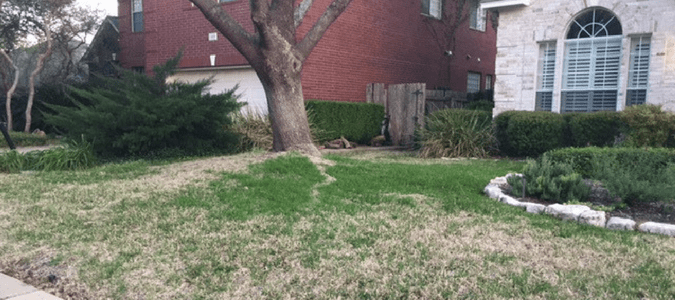Your lawn is full of all kinds of small insects, some which are beneficial, and some which are not. Chinch bugs are a common lawn pest that can do a lot of damage to your grass. Let’s learn more about chinch bugs, how to know you have them and how to get rid of them if they are in your yard.
Chinch Bugs: What Homeowners Need to Know
Southern chinch bugs are small and slender with white wings with distinctive black triangular marks. Nymphs will go through five phases. The color will change from red with a faint white band across the midsection to black with a white band. They are the top pests associated with St. Augustine grass, although they can also feed on other grass species, such as Zoysia and Bermuda grass.
Chinch bugs are inactive during the winter months, as they prefer warmer, dry climates. This means that in warmer parts of the country, they can be active most months of the year. When feeding, chinch bugs suck the juices out of your grass and inject the blades with their toxic saliva to inhibit the flow of water, causing grass to die.
Female chinch bugs can lay up to 300 eggs under optimal conditions, which then take two weeks to hatch. The entire life cycle of a southern chinch bug is seven to 8 weeks, which could allow for up to five generations of chinch bugs throughout the year if you live in a hotter region of the country.
Do Chinch Bugs Bite?
Although these small pests can do some serious damage to your lawn, they are harmless to humans. They may mistake your hair follicles for a blade of grass and try to bite, causing you some itching and discomfort for a moment, but will move on to seek out their normal food.
How Do I Know If I Have Chinch Bugs?
One of the first signs of chinch bugs living in your lawn is the appearance of large numbers of live insects which are visible when you part or step in the grass. If the chinch bug infestation has gotten out of hand, the impact can resemble drought damage. A chinch bug infestation will look like irregular patches of grass surrounded by a perimeter of dead grass.
If you are still not sure if your patchy grass is a result of drought damage or chinch bugs, you can perform what’s called a float test by following these six easy steps:
- Cut the bottom and top lids off a coffee can.
- Push the can into the ground, using a twisting motion.
- Fill the can with water.
- Wait for about 10 minutes.
- See if any chinch bugs float to the surface.
- Repeat in several different locations in your yard where grass appears damaged and not dead.
How to Get Rid of Chinch Bugs
If the float test reveals an infestation, you’ll want to take care of the problem right away before small patches turn into an entire yellow lawn of dead grass. Call in a lawn care professional or treat the area with an herbicide. If you choose to treat the infestation yourself, make sure to read the label carefully before using it.
After you treat the affected areas, clear all the thatch from your lawn, as this provides a safe place for chinch bugs to hide. The best way to prevent chinch bugs from returning is to practice proper lawn care. Maintaining a healthy lawn helps your grass bounce back from the damage caused by feeding chinch bugs. Keep an eye out for these pests, keep thatch to a minimum and consider applying preventative control products in early spring.
More Ways to Prevent Chinch Bugs from Invading Your Lawn
Southern chinch bugs are attracted to dry conditions, so it’s important to maintain a regular watering schedule. Ensure grass doesn’t receive too much or too little moisture. You’ll want to keep lawn thatch to a minimum with regular mowing, aeration and top-dressing. If you’ve caught a small patch of chinch bug damage, apply an insecticide with spot treatments to prevent any further damage. Here are a few things you can do to prevent an infestation:
- Avoid applying excessive fertilizer.
- Mow grass to the recommended height.
- Lower the amount of applied nitrogen in turfgrass.
- Make sure your lawn is properly irrigated by keeping a regular watering schedule
- Utilize predatory insects, including big-eyed bugs, lacewings and ants.
- Apply insecticide as soon as you notice unusual, yellow patches in your lawn.
ABC Can Protect Your Yard from Lawn Pests
Since it only takes two weeks for chinch bug eggs to hatch, it can be hard to get rid of these pests on your own before the next generation of chinch bugs are born and cause more damage to your yard. Call in an expert to help you get the job done fast. Our professionals at ABC Home & Commercial can diagnose the problem, treat it quickly and help you prevent future infestations.

